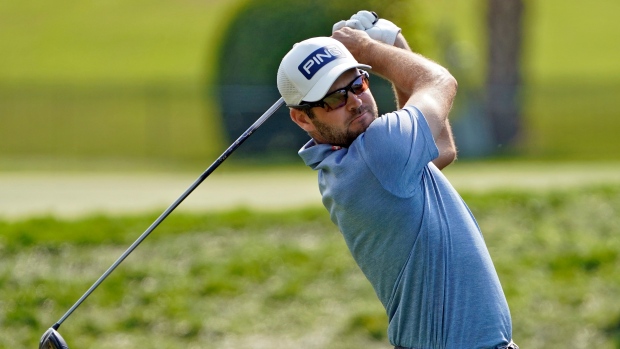Jun 16, 2021
Canadian quartet ready for demanding U.S. Open
The same four Canadians who competed in the U.S. Open last year will attempt to battle through the South Course at Torrey Pines, which has been beefed up and is ready to punish any golfer who misses any shot by any margin, Bob Weeks writes.
By Bob Weeks

SAN DIEGO – For the second consecutive year, the same four Canadians will take on the U.S. Open and attempt to battle through what is generally considered the toughest test in golf.
Adam Hadwin, Corey Conners, Mackenzie Hughes and Taylor Pendrith face the South Course at Torrey Pines which has been beefed up compared to when it hosts an annual stop on the PGA Tour, the Farmers Insurance Open in January.
For the second consecutive day, the four Canadians practiced together on Wednesday, this time playing the back nine after a full 18 a day earlier. It’s a welcome grouping and brings attention to the depth of the game north of the 49th.
“It seems like every big event now we're filling out a full group,” stated Hadwin, who is making his sixth start in the American championship. “It's a lot of fun. We always have a great time with each other. Lots of jabs. Hopefully a few dollars trading hands to the good guys, but, yeah, we enjoy it.”
The cheerful banter between the four golfers heard on Wednesday will likely disappear when they get down to business on Thursday. As is to be expected, the U.S. Open set up is ready to punish any golfer who misses any shot by any margin. The gnarly rough lines fairways and is especially deep around the greens. There is also an element of luck depending on where a ball stops. Land in one spot and it can be easily extracted but come to rest just a foot or two away and it might require a vicious lash with a wedge to move it.
“It’s a very difficult golf course,” said Conners, who comes into the event as the top-ranked Canadian male golfer, sitting 36th on the Official World Golf Ranking. “It’s got all the characteristics of what you’d consider difficult – it’s got length, long rough, fast greens, firm greens, so it’s great. It’s a course that I like, that I’ve been able to play a few times and I’m really looking forward to a fun test.”
One of the first challenges for the golfers was to throw out most of the playbook used for the Farmers at the start of the year. At that time, the course is no pushover but the average winning score over the last four years is a bit over 14-under par, thanks in large part to the softer conditions. A player whose 72-hole score dips anywhere in red figures this week will likely be raising a trophy Sunday evening.
“The conditions have definitely firmed up a little bit but the golf course for the most part is still quite similar visually,” said Conners. “I haven’t really adjusted many club selections or targets off the tee. There’s a lot of drivers out there for me, which I like. I just have to be a little more cautious on some of the approach shots; the greens are getting a little bit more of a bounce and release instead of pretty soft so that’s definitely a big adjustment but something that we’ve been able to figure out that last few days.”
Although he’s missed the cut in his two previous appearances at this tournament, Conners would seem to have the perfect game to tackle this beast. He currently sits 10th in driving accuracy and eighth in greens in regulation on the PGA Tour. His putting has improved significantly since last year although his wedge play remains somewhat suspect. He spent most of last week at home working on that.
Last year, the low Canadian in the event at Winged Foot was Pendrith, who plies his trade on the Korn Ferry Tour at the moment, but has already assured himself of a spot on the PGA Tour next season. As with the others, he was looking forward to the challenge just as he did a year ago when he ended up tied for 23rd.
“It’s awesome,” he said. “Last year’s setup was really hard and this is exactly the same. It’s a little different style of golf course but it’s getting firm and fast and the rough is up in certain spots and the greens are super tricky. I think hitting fairways will be key and managing where you miss the greens will also help.”
The physical necessities will be required, no doubt, but the mental demands will be just as important. The U.S. Open can tax the mind when a minor flaw on a shot can produce a big number. The margins for error are much tighter and the penalties for being overly aggressive more severe.
“Patience is probably the biggest thing,” said Hadwin, who has seen significant improvements the past few starts after working diligently on some swing changes the last six months. “You're going to have bad lies. You're going to have to chip out sideways. You're going to have to make putts for bogey. Just stay patient. Everybody else is dealing with the same thing. One shot at a time.”
“You’re one swing away from making a bogey so you have to be patient,” added Pendrith. “Everybody’s going to have some bogeys.”
Patience, accuracy, distance, speed – the Canadians know what they need to do this week. Now it’s time to see if they can execute.
